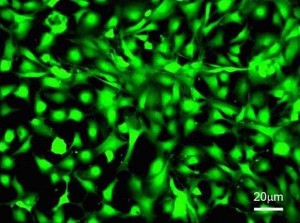
Beer may have more benefits that you thought. Credit: Q. Dombrowski; Flickr CC BY-SA 2.0
When you think about it, bones are really quite impressive—they are incredibly strong yet robustly dynamic, able to heal, remodel, and turnover to keep our skeleton structurally sound throughout all (or at least most of) our lives. Yet, just like anything, sometimes the damage is just too great for our bodies to fix.

A 1 cm porous block of the biomaterial crafted from beer bagasse. Credit: Angeles Martin Luengo; Malcolm Yates; Eduardo Saezl; CMM-SCIC; ICP-CSIC
A lot of research has gone into building bones replacements to fix broken, diseased, or otherwise incomplete human skeletons. While most of this previous innovation has been performed exclusively in the laboratory, new research may bring the brewery into the fold, too.
With the global beer industry estimated at more than $500 billion, and considering our society’s long love affair with the brewed beverage, that just might be a smart move. (Plus, any effort to make something useful from waste gets two thumbs up in my book.)
Researchers from the Universidad Politecnica de Madrid and Consejo Superior de Investigaciones Cientificas, in collaboration with Mahou and Createch Co., have pioneered a new bone biomaterial from an unlikely source—beer brewing waste.
(Score board alert: two points for beer [point one was awarded here]!)
Spent grain waste, called bagasse, contains many of the same key molecular ingredients of bone—phosphorous, calcium, magnesium, and silica—making it a good fit for a bone replacement material.

Mouse osteoblasts growing over 3D matrices of the biomaterial. Credit: Milagros Ramos; Ana Martinez Serrano; CTB-UPM
To make bagasse suitable to mingle with bone, the researchers only needed to add silicon through the hydrolysis of TEOS and sinter the resultant material in excess of 1,100°C. “The analysis of this new material shows the presence of interconnected pores of between 50 and 500 microns in diameter which is similar to the porosity of cancellous bone,” according to the press release.
The researchers have so far established that the new material is biocompatible with cultured bone cells called osteoblasts and that “bone-like cells” can adhere to the materials and express normal bone markers, suggesting the bone-esque biomaterial could make a great replacement material. According to the paper’s abstract, published in RSC Advances, the beer-born material could be used “in osteoporotic treatments, coatings for prostheses, bone grafts and odontoestomatological implants.”
With several potential health benefits of drinking beer, it seems almost too good to be true that beer’s waste could also be used to toast to your health. Nonetheless, cheers to that!
The paper is “Preparation, characterization and in vitro osteoblast growth of waste-derived biomaterials” (DOI: 10.1039/C3RA47534D).
